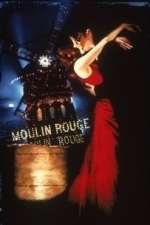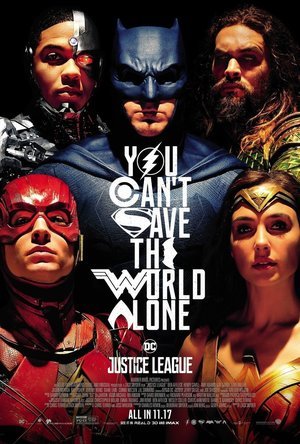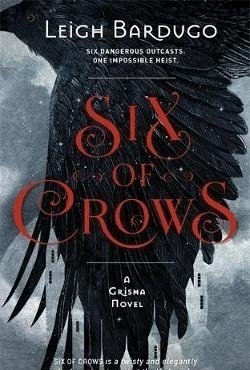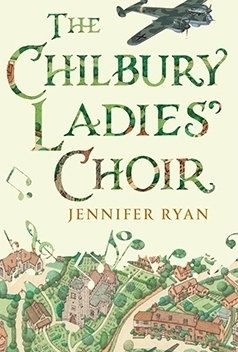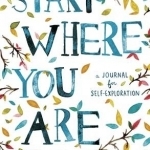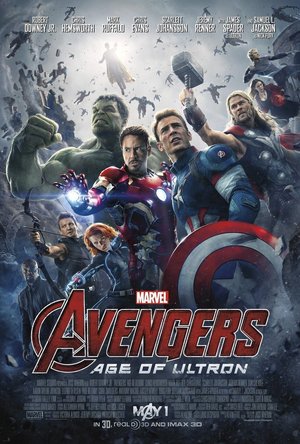
Dragon Dictation
Business and Utilities
App
Dragon Dictation is an easy-to-use voice recognition application powered by Dragon®...
BankofMarquis (1832 KP) rated Moulin Rouge! (2001) in Movies
Apr 15, 2020
Yes...it's that good.
Set at the turn of the century (the 19th to the 20th century) during the Bohemian Revolution in Paris, MOULIN ROUGE tells the tale of the...you guessed it...the Moulin Rouge theater/club where a young writer (Ewan McGregor) gets pulled into the lives of the artists and others trying to make a living, falling in love with a young courtesan, Satine (Nicole Kidman) all under the watchful eye of Harold Zidler (Jim Broadbent).
But it is not the story, but the telling of the story that sets this film apart. It is chaotic, wild, colorful, sexy, grimy, loving, alcoholic and spectacular - all things that not only describe this film, but the Moulin Rouge itself. Directer Baz Luhrman really shines in his vision of this picture that juxtaposes colorful sets and costumes, unique characters and songs and dance and music that tells the tale in a a unique way.
Oh...did I mention that most of this music is MODERN music? From Elton John's YOUR SONG to Roger's and Hammerstein's THE SOUND OF MUSIC to LADY MARMALADE to the ingenious use of Sting's ROXANNE (in a tango scene no less), this film is an amalgam of song that fits each scene perfectly. At what first seems incongruous, upon further viewings, the songs are slyly picked to accent the emotions and dramatic purpose of each scene.
As for the acting, McGregor and Kidman are beautifully cast (pun intended) as the young lovers. Their good looks radiate across the screen and I thought they had great chemistry. John Leguzamo and the other "Bohemians" pop in and out and are uniquely outrageous without being annoying. Richard Roxburgh's antagonist, "the Duke", came across in this viewing as not nearly as annoying as I have found him to be previously. Maybe there is more to this character/performance than meets the eye.
But it is Jim Broadbent's portrayal of the Master Shoman, Harold Zidler, that steals this film for me. He is a cunning and ingenious showman who (more than once) proves that he will stop at nothing for the "show to go on", but there are many notes to Zidler, at once in control and at the same time trying to KEEP control of events spiraling out of his control that actually shows a desperate man doing whatever he can to survive.
Add all these ingredients up and you have a film that gets deeper and richer with each subsequent viewing. I have yet to get tired of this film - and I am looking forward to the next time I immerse myself into this world.
Letter Grade: A +
10 stars (out of 10) and you can take that to the Bank(ofMarquis)

FineScanner PRO - PDF Scanner
Business and Productivity
App
FineScanner turns your mobile device into a powerful all-purpose mobile scanner to quickly capture...

bting English - Trading English
Catalogs and Business
App
Trading English is the language to adapt to working life requirements for the purpose of covering...

GPS-Tracks for iPhone
Navigation and Travel
App
Multimedia-Tour guide with Topo maps for the european alpine region. GPS-Tracks for iPhone is...
Daniel Boyd (1066 KP) rated Justice League (2017) in Movies
Nov 27, 2017
The first half of the movie is extremely choppy and unfocused and feels more like a grab bag of scenes cut together to resemble a story rather than any sort of coherent story. Then the last half of the movie plays it incredibly safe and plays out exactly how you would predict. There are no surprises or twists and then the credits roll and half heartedly set up a potential sequel, although with the huge amount of money Warner Bros lost on this movie if the rumoured budget amount of 300 million is to be believed, we may not be getting another entry any time soon. Which is sort of a shame because there are aspects of this movie that I really like, such as Batfleck and Jeremy Irons as Alfred.
There isn’t really much to talk about here, which is disappointing. Although Batman V Superman left a great deal to be desired as a decent comic book movie, it at least gave all of us something to talk about. The cast is alright, Affleck was just as great as Batman as he’s been up until now, Cavill puts in a decent Superman performance if you can get by that dodgy CGI upper lip, Gal Gadot is great as Wonder Woman, Ray Fisher does fine as Cyborg, Jason Momoa’s Aquaman is pretty one dimensional, but I think that’s more to do with the script than with the actor. Ezra Miller is annoying but clearly supposed to be the comic relief in the film. JK Simmons is wasted as Jim Gordon, but it’s nice to see Amy Adams in a reduced role here. I don’t hate Amy Adams, but I am not a fan of her portrayal as Lois Lane and surprisingly, she actually serves a purpose in this film, as opposed to pondering about with a camera looking surprised. The SFX varies greatly, with some really impressive visual effects and some that look like absolute garbage.
Slight spoilers going forwards I guess, but it’s not exactly a shocking revelation that they resurrect Superman from the dead in this movie, which as a long time comic book fan, I feel like could have been handled better.
Overall, it’s not the worst movie in the world; it’s not even the worst movie in this universe, but really it should be great. This movie should be so much better than, ‘okay,’ it’s the Justice League for Christssake. This film isn’t even as good as Thor Ragnarok, the third sequel in one of the least popular Avenger’s solo film. Justice League should have blown Thor out of the water, both commercially and critically! However, as a standalone film, without any context around it, it is a fun film and I did enjoy my time with it.
postapocalypticplayground (27 KP) rated Six of Crows in Books
Jan 9, 2018
Six of Crows is told in multiple points of view, which can sometimes be confusing for me but there were only a couple of occasions that I found myself flipping back to the start of the chapter to remind myself who in the limelight. I felt that this was a style that worked really well with this story as the main six often found themselves in different places with different tasks and this way of storytelling allowed it all to come seamlessly together. Whilst it does majorly involve the Grisha, I found it was a world that I easily fell into pace with, without having read the Grisha Trilogy first. I'm told there are a number of nods which are present but I never felt lost or like I was missing out.
The characters are fantastic, my favourite by far was Inej, the wraith. Rescued from the oldest profession by Kaz, she is a force to be reckoned with, a silent assassin. There are no walls she can't climb or secrets she can't glean. I felt most for her, what she had been through before joining with Kaz and how it had driven her to become who she now was. I loved the sense of purpose that grew within her throughout the story. The others too though all have their stories to tell, a proper band of misfits all with their secrets and terrible histories that have shaped them. It's hard to remember that they are all teenagers, but then that makes them easier to underestimate.
The audacity behind Kaz's plan is immeasurable and it is through this that I am just in awe of the writing. At just shy of 500 pages there was not a single moment of rest for the reader, I felt on edge every step of the way. I felt fear for these characters, trepidation but also the good humour that only a rag tag bunch of forgotten teenagers could have in the circumstances they faced. I simply did not want to put this down, at all. The last of the six sections I tried to slow down as I knew it was coming to an end but it pulled me in and wouldn't let go. It's rare for a book to leave me breathless, but this one really did. It's the first of a duology and I can't wait for pay day to roll round so I can pick up Crooked Kingdom. If I could give this six stars I would, It's a truly amazing read and If you're a YA fantasy fan you will not be disappointed!
Hazel (1853 KP) rated The Chilbury Ladies' Choir in Books
May 23, 2017
"Just because the men have gone to war, why do we have to close the choir? And precisely when we need it most!"
Set in the fictional village of Chilbury, Kent during the Second World War, The Chilbury Ladies’ Choir explores the lives of the women left behind whilst the men go off to fight. The remaining villagers are disappointed at the closing of the church choir, which, according to the vicar, cannot go on without any men to sing the tenor and bass parts. However, the arrival of bold, forthright Primrose Trent brings the birth of a new choir, a choir for women only.
Although a war is going on, the ladies of Chilbury have so many other things on their minds. Told through a conflation letters and diary entries, The Chilbury Ladies’ Choir reveals the everyday lives of a handful of characters. Mrs Tilling’s journal provides an overview of the general events, whilst 18-year-old Venetia’s letters divulge the wiles and charms she uses in the name of romance. Other characters, particularly the young teenager, Kitty, offer other insights to the goings on in the village.
From falling in love, to having babies, The Chilbury Ladies’ Choir is full of secrets, schemes and misunderstandings that almost let the villagers forget there is a war on. However, the effects of war do reach the little village, bringing with it terror and grief.
The individual stories that make up the book provide the reader with a number of scenarios that are full of emotion, but equally entertain. One moment the horror of war could leave readers in flood of tears, the next, Mrs B.’s pretentious personality and vaunting comments bring amusement and laughter.
All the while these events are playing out, the Chilbury Ladies’ Choir pulls the women together, providing them with a source of comfort to get them through the terrible times. No matter what disasters befall them, whether caused by war or their own actions, joining together in song gives them a purpose and opportunity to have a break from their fears and grief. War may destroy, but they will carry on singing.
Written in the manner of private letters and journals gives the novel a personal touch. The story is not merely narrated, it is expressed through the emotion and feelings of individual characters, making the scenarios seem more authentic. The downside to this method is the lack of distinction between each character’s voices. With no detectable dialect, the musings of a 13-year-old are composed in much the same manner as the much older Mrs Tilling.
The Chilbury Ladies’ Choir is an enjoyable piece of historical literature, which is bound to appeal to many people. Although set during World War II, its primary focus is on the people in the village, making it more attractive to readers who are fed up of reading about bombs and fighting. A mix of family issues, bribery and romance provide considerably more entertainment than a generic wartime novel. Being Jennifer Ryan’s debut novel, The Chilbury Ladies’ Choir is of a quality that suggests the author has so much more to deliver in the not-so-distant future.
Hazel (1853 KP) rated Start Where You are: A Journal for Self-Exploration in Books
May 30, 2017
Meera Lee has used her self-taught artistic talents to produce beautiful, hand-rendered typographic compositions for every page of the book. She has selected appropriate quotations that relate to a task she has set the reader on the facing page.
Most of the tasks throughout the book require the reader to think carefully and write down their answers. Each instruction is to help people sort through their true feelings and put their thoughts into some kind of order. For example: “What is something you wish you could leave behind?”
Although Start Where You Are has not (yet) be medically approved by mental health professionals, it contains a lot of deep, meaningful, assignments that can help you to learn more about your own insecurities, anxieties and depression. Meera Lee admits in her introduction that it took her a long time to be comfortable with her own life and spent a lot of time waiting for the future to arrive, but not really knowing how to get there. She discovered that in order to move forward she needed to find out who she really was, what was important to her, and what she wanted out of life. Meera Lee confesses that this is no easy task and warns that some questions within the book will be harder than others – but ultimately Start Where You Are will reveal your true personality, hopes and dreams, and convince you that life is not all doom and gloom.
There is no right or wrong way to complete this book. It is not a course or a linear activity, therefore there is no need to complete the pages in order. Some pages may feel too difficult, which is not a problem – the book’s purpose is not to cause stress – you can skip that task and come back to it when you are ready.
I have found Start Where You Are very interesting so far. I particularly enjoy reading the quotes included in the fantastic artwork. They are all positive and inspiring, showing the brighter side of life. As an artist, I have decided to also use this book as a way of practising my art skills. Recently art journal photographs that have appeared on Pinterest have been inspiring me to make my own. Instead of starting with a blank book I am using Meera Lee’s publication instead. On each page I complete the task given, but instead of merely writing my answers down, I display them in some sort of typographic or illustrative composition. So not only is Start Where You Are benefitting my mental health and thought processes, it is helping to improve my art skills too.
I highly recommend Start Where You Are for everyone feeling a little lost and unsure about the future. Whether you have been diagnosed with a mental disorder or are going through a low period of your life, this book is perfect for you to help pick yourself up again. But please remember this is not a form of therapy and is not going to “fix” you. It will either be a bit of fun or something insightful depending on how you approach it.
Phillip McSween (751 KP) rated Avengers: Age of Ultron (2015) in Movies
May 12, 2018
Acting: 10
Beginning: 10
As most MCU (Marvel Cinematic Universe) films tend to do, Avengers: Age of Ultron gets off to a really quick start wasting no time with action. Everyone gets a piece in the first ten minutes and they're working even better together than they did in the first film. While Hulk (Mark Ruffalo) and Thor (Chris Hemsworth) flex their muscle and rip tanks in half, Hawkeye Jeremy Renner) pierces through dudes like the modern-day Legolas.
Characters: 10
A part of what works so well for these characters is how grossly different their backstories and personalities are. Hawkeye is a family man that uses humor to mask his annoyance in certain situations. Tony Stark (Robert Downey Jr.) is constantly pushing the boundary envelope and acts superior to the ideas and thoughts of the rest of the group. Normally you hate a guy like this but he wears the hat so well. Throw in Vision, a benevolent AI with a sense of purpose, and the rest of the crew and you have a pretty solid character-base.
AI of the hour Ultron (James Spader) is a villain with a surprising amount of depth. He fights for his own cause which, in his mind, is the only necessary option for balance and preservation. His smooth, even-keeled voice can be chilling at times making for some pretty solid scenes.
Cinematography/Visuals: 10
Conflict: 10
There is enough action in the film for two films. The plot steamrolls into new scenes of combat, one after the next. Dull moments are nonexistent. There is something about having all of these characters on the screen at the same time that keeps the film exciting and fresh. Teamups are especially cool, watching pairs like Captain America (Chris Evans) and Thor perform unique combo moves. You want eye candy? The film delivers.
Genre: 8
Not the best superhero film I've seen, although I believe that says more about the emergence of the genre than the film itself. This century has ushered in some phenomenal superhero movies that do the genre proud, including ones that set themselves apart by having enriched characters and deeper meaning. Age of Ultron is solid, but falls just slightly out of the Cream of the Crop territory.
Memorability: 9
The action sequences alone played throughout my mind well after having watched the film. Among other things, Age of Ultron gives you a falling city along with a classic matchup between Hulk and Stark in the Hulkbuster suit. Perhaps the most memorable part came at the very end when Ultron and Vision are having a conversation about the fate of humanity. Part foreshadowing, part introspection, it was a very fitting way to bring the curtain down on the action.
Pace: 10
Plot: 9
Resolution: 8
Overall: 94
No, it's not the best MCU film made to date, but it's still a high-quality film with a solid story and memorable sequences that keep you glued to your seat. Thankful for the rewatch as I enjoyed it even more the second time around.
